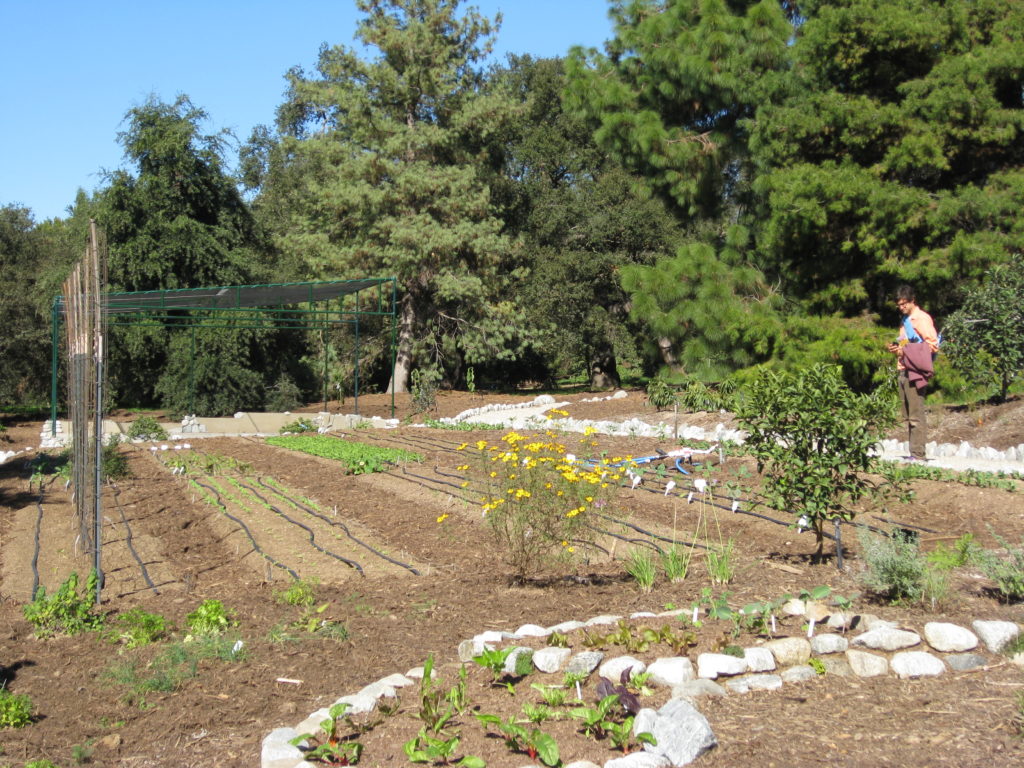How To Engineer A Garden Berm
During Quarantine, Build This Super-Simple Raised Bed to Maximize Your Garden
Is this the easiest raised bed ever?
Creative Commons photo by Kate is licensed under CC BY 2.0
Ed Note: If you've built a raised bed before, you know how vital they can be to a high-functioning garden. If you already have the materials handy, we've got the ultimate guide to building a conventional raised bed right here. With all this time on your hands, you might even be looking to raise your game with something like this next-level raised bed. But right now, you might be making different choices about when to leave the house, and whether to put yourself and others in harm's way for non-essential products. That's why we've asked author Christy Wilhelmi to help explain the Berm Bed, the no-nonsense, no-materials way to achieve a similar effect.
Often called unconstructed beds or mounds, berm beds are the right choice for those who want to build a garden without actually building anything—not even stacks of organic matter. These beds also allow for more creativity. They can be formed into any shape, length, and size to accommodate your grand garden vision. Do you want a snaking berm with sunflowers along the pathway? A circle mound for your potato patch?
Start Digging
There are several ways to build an unconstructed bed. A common practice is to mark out the bed areas, but instead of digging inside the bed area, dig soil out of the pathways and dump it onto the bed areas. This leaves the pathways lower than soil level and the beds higher than where they started. This technique was used by indigenous cultures to irrigate their crops and is often used in commercial agriculture today. The lower pathways fill with water, and the water is absorbed at the base of the mounds. Plant roots reach deeper for water, making them more resilient and drought tolerant. In permaculture, a variation of the pathway-turned-trench is called a swale and is often used to divert water away from flood-prone areas toward plant root zones.
Mounded raised beds are usually between 4 and 8 inches (10 and 20 cm) tall, though some adventurous gardeners have been known to build them waist-high. Pathway soil is mixed with compost to create loamy, well-drained soil that will hold together in mounds. The sides are sloped, and the surface of the mound either is flat across the top or has a gentle convex curve.

Christy Wilhelmi
The theory behind this kind of mounded bed is that it creates more surface area. Sloped sides plus a flat top equals more soil exposed to the sun, which means that the soil thaws and warms more quickly in spring. Some gardeners take advantage of the extra surface area by planting crops on the slopes of each bed. You gain up to another foot of growing space if your beds are 6 inches (15 cm) tall. Be aware that slopes can erode during watering, so keep the slopes, if not the whole bed, well mulched to retain water and prevent soil loss.
In-Ground Planting
While unconstructed, or berm, beds are essentially the same as in-ground planting, the difference is height. An in-ground garden bed is made by loosening the existing soil of the desired planting area and working (digging) compost into the top 4 to 6 inches (10 to 15 cm). If you have existing soil that tends toward sand or loam, this is a fine choice. Those with clay soil will find it difficult to cultivate a garden this way without adding copious amounts of compost. In fact, clay soil is the reason raised beds were invented in the first place! Because clay soil doesn't drain well and takes longer to thaw after winter, use this method only if you have sandy, well-draining soil.
Conditioning an in-ground planter takes about as much sweat and elbow grease as an unconstructed bed. Many first-time gardeners like to try this method before committing to a formalized garden layout. It doesn't require a lot of planning, just a lot of compost. Work the compost down into the top 4 to 6 inches (10 to 15 cm) of soil. The deeper you loosen and amend the soil, the better your crops will grow. You can add decorative elements, like stone or brick borders, and put stepping stones throughout the planter to avoid compacting the soil.
No matter what type of raised bed you decide to use, just know that good planning pays off. Your garden will reward you with a bountiful harvest if you put some time and energy into the overall design and structure. Build your beds once and enjoy them for years to come.
A Note on Metals and Soil
Do you know the history of the land you plan to cultivate? With all of these good intentions for healthier living, it would be a shame to inadvertently poison yourself by growing food in soil contaminated with heavy metals, so be safe and get that soil tested. If you live near a railroad, for example, you're probably going to have arsenic in your soils. Beets, chard, and spinach pull lead out of the soil. And Zinc inhibits the growth of plants; so does nickel. Most university agriculture departments offer basic soil tests, and some will test your soil for heavy metals. There's a lab in El Segundo called Wallace Laboratories. Their standard agri test includes heavy metals, which most don't.
An adapted excerpt from Gardening for Geeksby Christy Wilhelmi courtesy of CompanionHouse Books, an imprint of Fox Chapel Publishing. Copyright © 2020 by Christy Wilhelmi and Fox Chapel Publishing Company.
How To Engineer A Garden Berm
Source: https://www.sunset.com/home-garden/landscaping/unconstructed-berm-bed
Posted by: madisonwidefirearm.blogspot.com

0 Response to "How To Engineer A Garden Berm"
Post a Comment